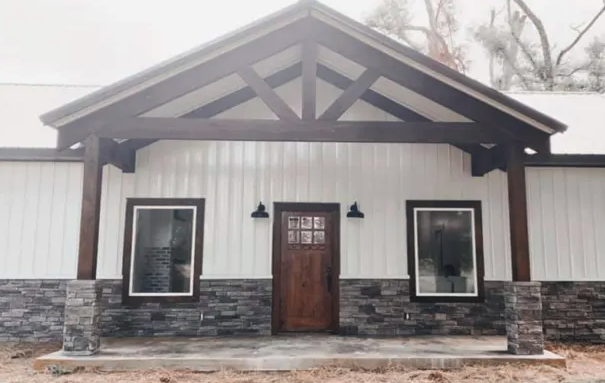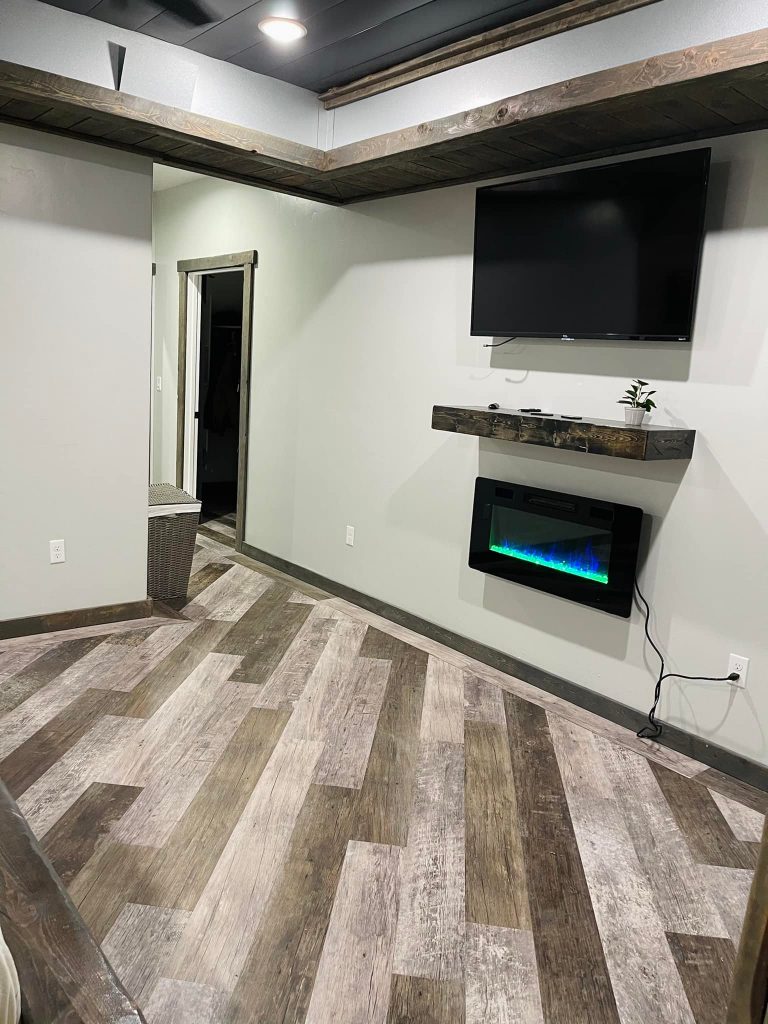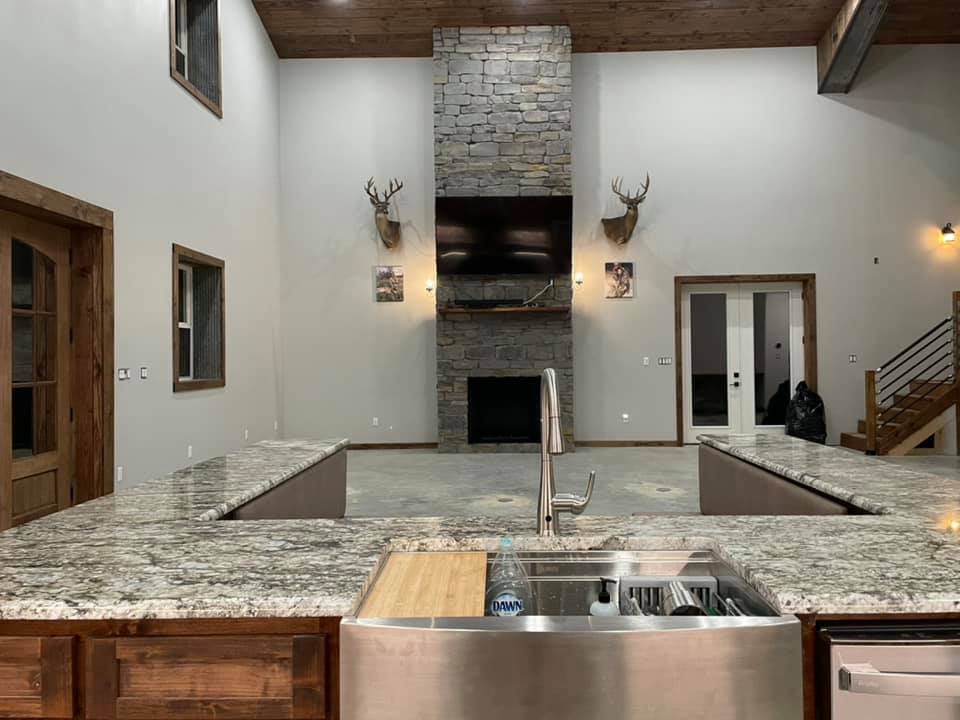Heating a barndominium is no different than heating a home. Sure barndominiums tend to be a little more energy efficient in the winter months thanks to the metal frame, siding, and roof that reduce heat transfer to the outside, but you still need to find a way to heat a barndominium, so you stay warm. There are many different heating options available, and you should choose the one most suitable for you. Before choosing how to heat your barndominium, be sure to review all your options first.

Type of Heating for Barndominiums
There are several main ways to heat your barndominium. These include:
- Furnace
- Radiant Heating Systems
- Heat Pumps
- wood burning stoves
- Space Heaters
- Fireplaces

The Best Ways to Heat Your Barndominium

Furnace
Most homes throughout the United States rely on a gas or electric furnace. This furnace is connected to air ducts that distribute the warm air into your home. These same ducts could also work to cool your home as well.
The sources combust natural fuels and emit large amounts of heat. The gas combines with air and is combusted inside a metal heat exchanger. This creates several harmful byproducts, which are vented out of the system via a flue pipe. In the United States, if you choose this option to heat your barndominium, it must meet the minimum standard set by the Annual Fuel Utilization Efficiency (AFUE).
With a really efficient system, you can reduce the heating cost and lower your carbon footprint. For a highly-efficient system, you will pay more money that you will need to budget into the cost of your barndominium. Typically even the best furnaces are more affordable than radiant heating and heat pump options.
You can also find electrical furnaces. These have been proven to be better for the environment than natural gas, as they utilize a more renewable energy source.
These are commonly located in areas where people do not tend to walk. This could include a crawl space or in the basement of your property. The furnace is connected to a series of air ducts running through your home to allow the heat to be widely distributed.
Heat pumps
A more energy-efficient alternative to furnaces is installing a heat pump. They operate similarly, sending warmed air through the ducts to reach different areas of the house. This is known as a forced-air heating system.
Heat pumps can be used to send both hot and cold air around your home. To heat your home, the pump draws heat from a source within the system and pushes it out through the room. When you wish to cool the home, the flow is reversed and warm air is expelled outside the home.
This is one of the more expensive systems to install initially but can reduce the cost of your energy bills over time. The most common version is an air-source pump, often used alongside another heat source.

Radiant heating system
This system works similarly to how ovens warm the kitchen. Heat is sent directly to wall paneling or floorboards through a system of thermal heat transfer. In simple terms, warmer areas give heat to cooler ones.
These systems do not have to deal with sending warmed air through ducts and can instead be used directly where it will have the most impact. This means that the system is more energy-efficient.
Due to this, it is the recommended heating method for people who suffer from extreme or serious allergies. Circumventing the heat supply around the air ducts means that there is less possibility of allergens being forced out into the home.
You can install these systems in a variety of locations. Common choices are under the flooring, in the ceiling, and the walls. Underfloor heating systems are the most popular iteration and can be purchased as an electric, air-heated, or hot water system.
Air systems are not very efficient and are the least popular type. Hot water systems work by using a pump to send hot water from the boiler through pipes under the flooring.
The most practical system is the electric one. This is because you do not need to install a network of water pipes to send the hot water through.
Wood-burning stove
These are very traditional heating methods. They work by burning wood or other kindling to create fire and heat. The stove is shaped like a box with a long tube extending from the top – the exhaust chimney.
They can work very well as a primary or supplementary source of heat, although they will need to be checked regularly. You must continue adding fuel to be burnt if you want the heat to keep being emitted, which you may have to do several times a day.
They are not very effective at heating a large area and will not be suitable as a stand-alone heating system for an entire barndominium. The heat is not directed through vents and ducts as with the other systems and is sent straight out of the stove itself.
This means that areas close to the stove will heat up well, but places further away will take a lot longer to heat up and will cool down very quickly when the stove is switched off.
Space heaters
Space heaters are great for providing heat to one room or specific area in your barndominium rather than the entire building. There are a huge variety of styles, sizes, and designs to choose from. This ensures that you can find the right appliance for your needs.
They are really useful when you need to add an extra boost of heat to a specific room. Most modern space heaters come with an auto-shutoff feature, but older models may need to be manually switched off to prevent them from overheating.
Space heaters are commonly powered by electricity, although some are powered by gas. These are commonly unvented and installed on walls or as freestanding units. You should be aware that this is a fire hazard and will need to be monitored. Gas heaters with an exhaust vent are safer as they prevent harmful fumes from spreading all over your barndominium.
Space heaters are not suitable for use as a primary heat source. They should only serve a supplemental purpose for a temporary period.

Fireplace
Fireplaces are also considered as supplemental heat sources. One fireplace will not be sufficient to warm your entire barndominium as the heat will not spread far enough. They are useful to incorporate as part of your heating system as they can help reduce the strain on other areas such as heat pumps and radiant heating systems.
Insulation
Barndominium Insulation is not a way to heat your barndominium, but it will help to keep heat inside. Insulation is commonly made from foam and fiberglass and helps with moisture control as well as trapping heat.
What is the best heat source for a Barndominium?
Before selecting the best heat source for your barndominium, you should weigh your options and what matters most. Is it energy efficiency, installation costs, reducing your carbon footprint, or something else? Radiant heating is the most energy-efficient way to heat your home when it is installed correctly, but this does seem to be the most expensive option out there. Furnaces are also popular because they are affordable, but they do require ductwork and are not as efficient. It is best to talk to a professional to confirm your choice of how you want to heat your home with them to ensure that you heat your barndominium efficiently during the cold winter.
If you are ready to start building the barndo of your dreams, check out our barndominium floor plans to help you create the barndominium of your dreams or use a barndominium design software program to help you plan out your space for your new home. When in the planning stages, be sure you also check out the barndominium financing and insurance options that are available. For more helpful tips, visit our FAQ barndominium section to get answers to all your barndo questions.
